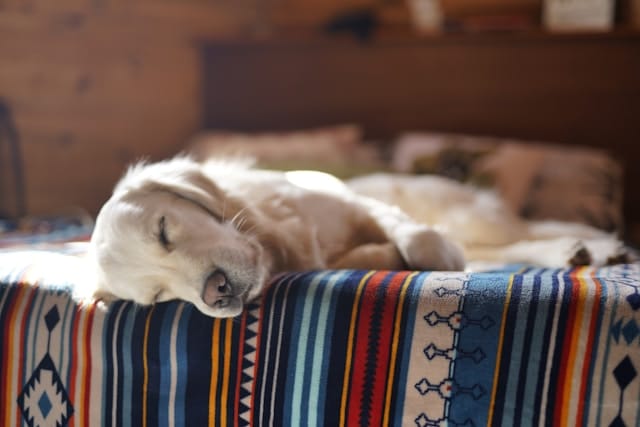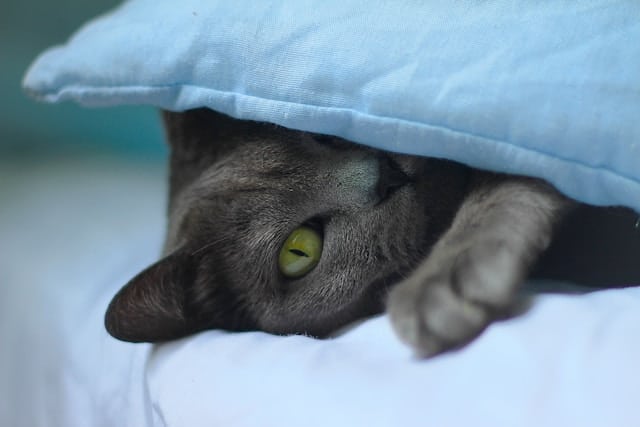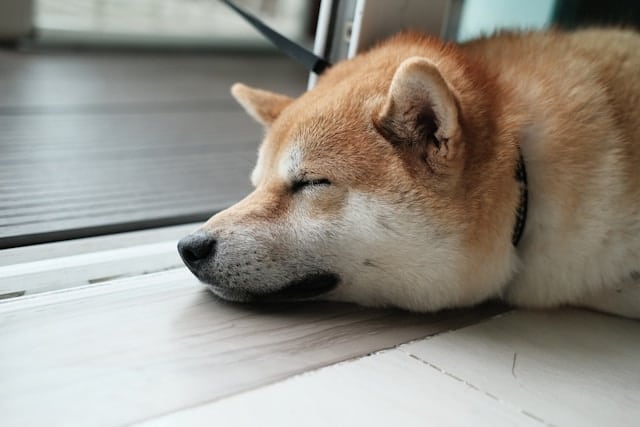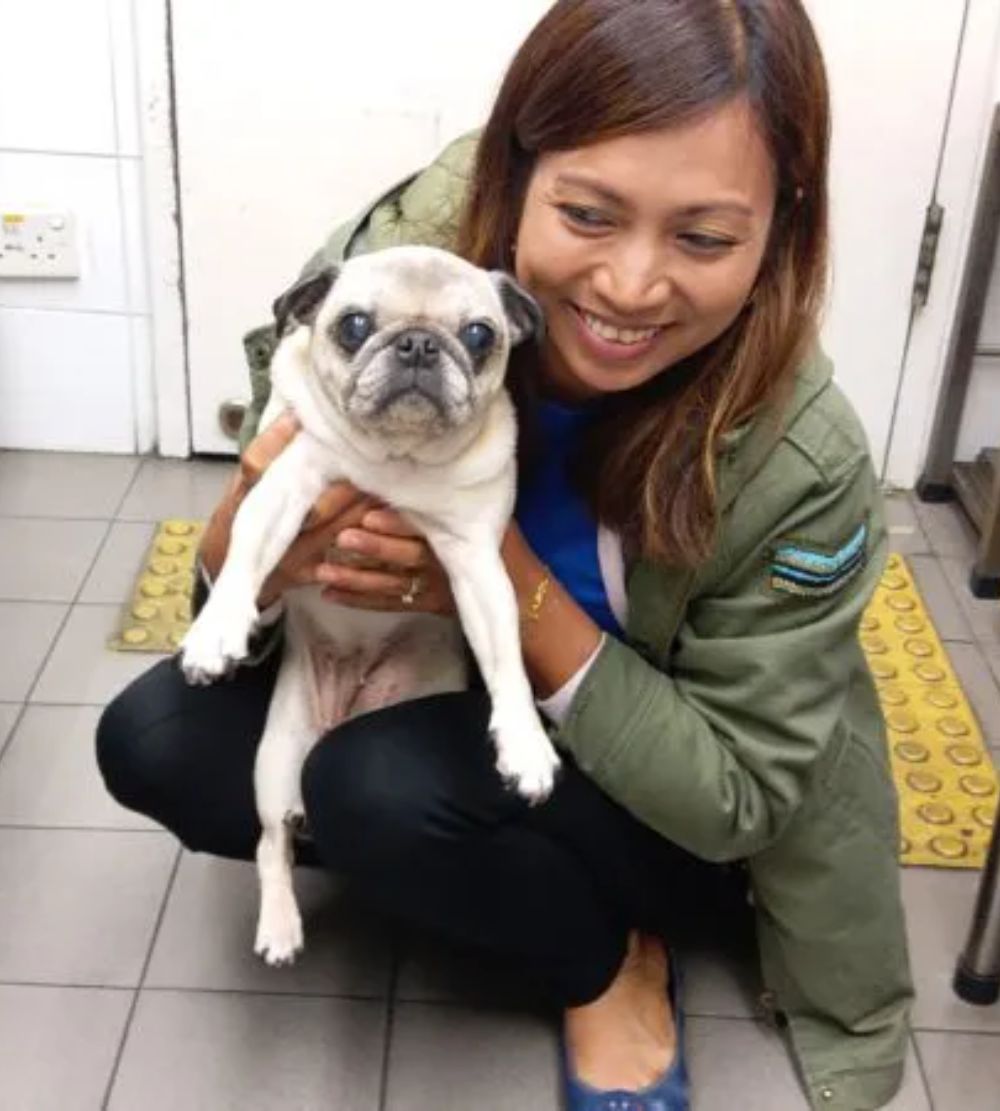We get it. Your pet is really nervous and you’re wondering about a sedative for air travel. You’re not alone!
At Ferndale, we’ve been Asia’s trusted pet travel experts for over 30 years, so you can count on us for reliable advice.
In this guide, our veterinarian and pet care specialists break down the airline industry’s rules on sedation and share safe, effective alternatives to help your furry friend travel more comfortably.
Why Sedatives Aren’t Recommended
Reasons why they are not recommended- pets are not supervised in the hold of the plane. The air pressure is not the same in the plane as sea-level (normally the standard airplane cabin pressure is typically maintained at an altitude equivalent of 6,000 to 8,000 feet (1,829 to 2,438 meters) above sea level so we can’t tell how the body reacts to sedatives at this altitude. Essentially its not very safe to do pet sedation during air travel.
Sedation is really only to be used for the air transport of zoo animals and similar. Pet dogs and cats shouldn’t have sedatives.
Understanding Air Industry Guidelines on Pet Sedation for Travel
The official stance of the International Air Transport Association (IATA) on sedation is outlined in the 51st Edition of the Live Animals Regulations (LAR).
Regarding the use of sedatives, tranquilizers, and psychoactive drugs, the guidelines state:
“Experience has shown that there is considerable risk in sedating animals transported by air. Tranquillizers reduce the ability of the animals to respond to stress during transportation. In addition, the reaction of various species to tranquillizers cannot always be foreseen. For these reasons routine tranquillization is not recommended. Tranquillizers shall only be used during the flight when a specific problem exists and shall be administered by a veterinarian or by a person who has had appropriate training or equivalent practical experience.”
Airline Rules on Sedation for Pet Travel
Different airlines may have their own specific policies on sedation. For example, according to the 51st Edition of the IATA Live Animals Regulations (page 33), Emirates Airline states:
“Emirates will not accept animals with sedation/tranquilization, unless it is administered on certain animals transported between qualified zoological gardens/societies, wild parks, and recognized wildlife protection centers, intended for conservation or breeding purposes. In this case, a certificate from a qualified veterinarian, describing the medication and dosage administered, must be provided by the shipper.”
So what about tranquilizers?
They are simply different names for the same thing as sedatives. According to the LAR (Live Animal Regulations), the Air Industry’s bible for moving animals, “sedation, tranquilization, and psychoactive drugs are considered synonymous. This group of drugs affect the central nervous system (brain) and are sometimes used during transport to make animals calm, sleepy, less anxious, and may cause animals to be less sensitive to pain. They can also cause animals to be unable to move, become unaware of their surroundings, and lose consciousness. These drugs can also have adverse effects on the cardiac and respiratory systems, leading to decreased blood pressure and respiratory depression, the effects of which can be exacerbated at altitude and risk animal health.”
Safe Alternatives to Sedatives.
Gabapentin is a prescription medication that’s commonly used to manage pain but has gained popularity as a solution for anxiety in pets, particularly in cats and dogs. It’s especially helpful for situational stressors like vet visits, travel, or grooming appointments. Gabapentin works by calming nerve activity, which can have a sedative effect, making it easier for pets to handle stressful situations. For best results, it’s usually given one to two hours before the event, but it’s essential to follow your veterinarian’s guidance on dosage and timing. There is some clinical trials to support this working, (e.g. a 2021 study titled “Clinical evaluation of the effects of a single oral dose of gabapentin on fear-based aggressive behaviors in cats during veterinary examinations”).
Bach Rescue Remedy is a homeopathic product that some pet owners swear by for mild stress relief. Made from a blend of flower extracts, it’s marketed as a natural way to ease anxiety caused by things like pet travel. Since it’s a gentle option, it’s suitable for both cats and dogs and can be given as needed, though results can vary depending on the individual pet.
Adaptil is a synthetic pheromone product designed specifically for dogs. It mimics the calming pheromones that mother dogs naturally produce to soothe their puppies. By recreating this comforting scent, Adaptil can help dogs feel more at ease during stressful situations, such as moving to a new home, encountering loud noises, or adjusting to changes in their environment. Available as diffusers, sprays, or collars, it’s a non-invasive option that many dog owners find effective for ongoing or situational anxiety.
For cats, Feliway offers a similar solution by mimicking feline facial pheromones. These are the pheromones cats naturally release when they rub their faces on surfaces, marking an area as safe and familiar. Feliway helps cats feel secure during stress-inducing events like travel, or even tensions in multi-cat households. It comes in diffuser or spray form, allowing for flexible use depending on the situation. Many cat owners report it as a lifesaver for creating a calm environment for their feline friends. Adaptil and Feliway, we have seen used as sprays inside the travel crate or bag. Note that the base is alcohol and so this bottle needs to be in the checked luggage not in hand luggage.
Preparing Your Pet’s Travel Crate Like a Pro
You can spray the crate with Adaptil for dogs, or Feliway for cats. Spray it at least 10 or 15 minutes before the pets go in the crate, so the alcohol base smell of these products is gone. Place some familiar bedding.
Any medications or supplements travelling with pet crate (in pill bags for example) normally need a prescription letter so the airline or other parties know what it is for.
Diverse Pet Needs
Different species or breeds may respond uniquely to travel anxiety and calming techniques. For example, flat faced breeds like pug’s already have poor airways as a BOAS or brachiocephalic breed, so we can’t do anything to compromise how awake these dogs are. They also may be harder to give pre-travel exercise to help them settle.
Dogs can experience varying levels of anxiety depending on their breed and temperament. Some labradors might be pretty calm in a crate but a small chihuahua may not be used to being left alone or not carried, and so while smaller breeds, like Chihuahuas, may feel safer with familiar bedding and pheromone sprays like Adaptil and crate training will be more essential.
How to give alternatives to sedatives for travel
Whatever you give it’s perhaps sensible apart from discussing it with your veterinarian, to trial it a few days or a week before travel to determine the effectiveness of it and also ensure you feel there’s no mild negative aspect of the product. Most things it’s suggested to spray or administer when the pets are still calm i.e. before leaving the house for the airport, they will be more likely to work when not already too anxious.
Why some pet owners might still consider sedation
Some dogs and cats are super anxious on leaving the house. They might cry out, or scratch at the travel box, and hurt themselves or damage the box. If the airlines see blood or see a damaged crate they might not allow them to be checked in.
But, despite this sedation is not recommended because of the risks to the pets of being too unconscious from the sedative. Also note that if the airline thinks the pets are sedated they can reject the pets from checking in.
Do consider some safer alternatives as solutions. Also we strongly recommend crate training that means the dog or cat sees the crate as a familiar and safe part of their environment and not a threat.
Making Air Travel Stress-Free for Your Pet
Helping your pet travel calmly and safely is all about finding the right approach for their unique needs. While sedatives are not recommended, alternatives like Gabapentin, Adaptil, or Feliway offer safer, effective options to reduce anxiety. By consulting your veterinarian and preparing well in advance, you can make air travel a more comfortable experience for your furry friend. If you need guidance, our team at Ferndale is here to help—reach out to us for expert advice on flying with your pet!
Frequently Asked Questions
Why are sedatives not recommended for pets during air travel?
Sedatives can impair a pet’s ability to handle stress, affect heart and respiratory function, and may pose risks at high altitudes due to changes in air pressure. Its also not allowed by IATA the airline industry!
What is the difference between sedatives, tranquilizers, and psychoactive drugs?
These terms are often used interchangeably. All refer to drugs that affect the central nervous system, calming pets but with potential risks, especially during air travel.
Can I give my pet non-prescription calming products before flying?
Yes, products like Bach Rescue Remedy, Adaptil, or Feliway may help ease anxiety. Always consult your veterinarian for guidance.
What is Gabapentin, and how does it help pets during travel?
Gabapentin is a prescription medication that one use is to calm pets and reduce situational anxiety, such as during vet visits or travel.
Are Adaptil and Feliway safe to use in crates during flights?
Yes, these pheromone-based products can help pets feel calmer. Ensure sprays dry completely before use and pack them in checked luggage due to their alcohol base.
Do I need a prescription to carry anti-anxiety medication for my pet on a flight?
Yes, most airlines require a veterinarian’s prescription and a letter detailing the medication and its purpose.
How do airlines enforce rules regarding pet sedation?
Airlines generally refuse sedated pets unless they meet specific criteria for zoo animals or conservation purposes, as outlined by the IATA regulations.
Can natural remedies like Bach Rescue Remedy really help anxious pets?
Results vary, but some pet owners report success with these mild, non-invasive options. It’s worth discussing with your vet.
What can I do to prepare my pet for air travel without medication?
Acclimate your pet to the travel crate, use pheromone sprays, maintain a calm environment, and ensure dogs are well-exercised before the flight.
Who can I contact for expert advice on flying with my pet?
Contact Ferndale’s team of pet relocation specialists for tailored advice and support.




